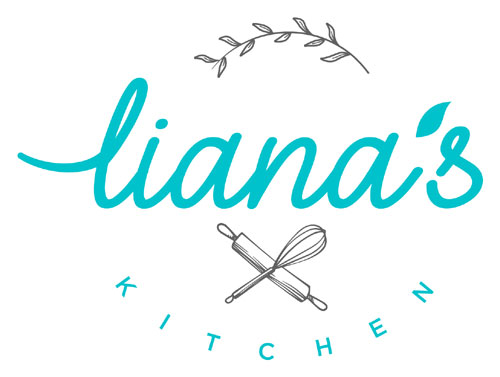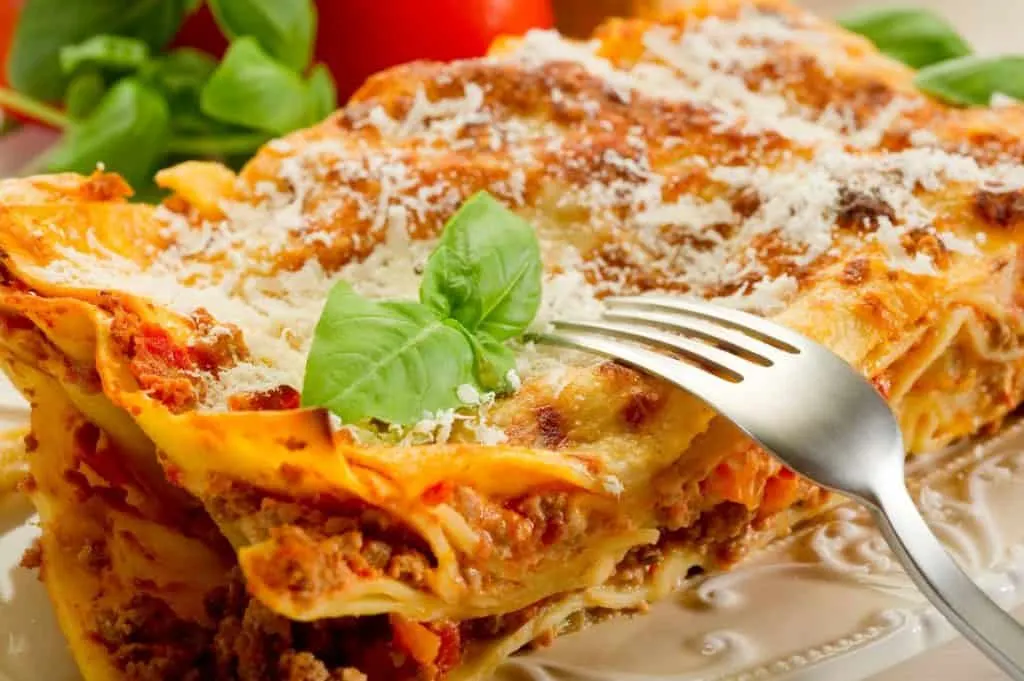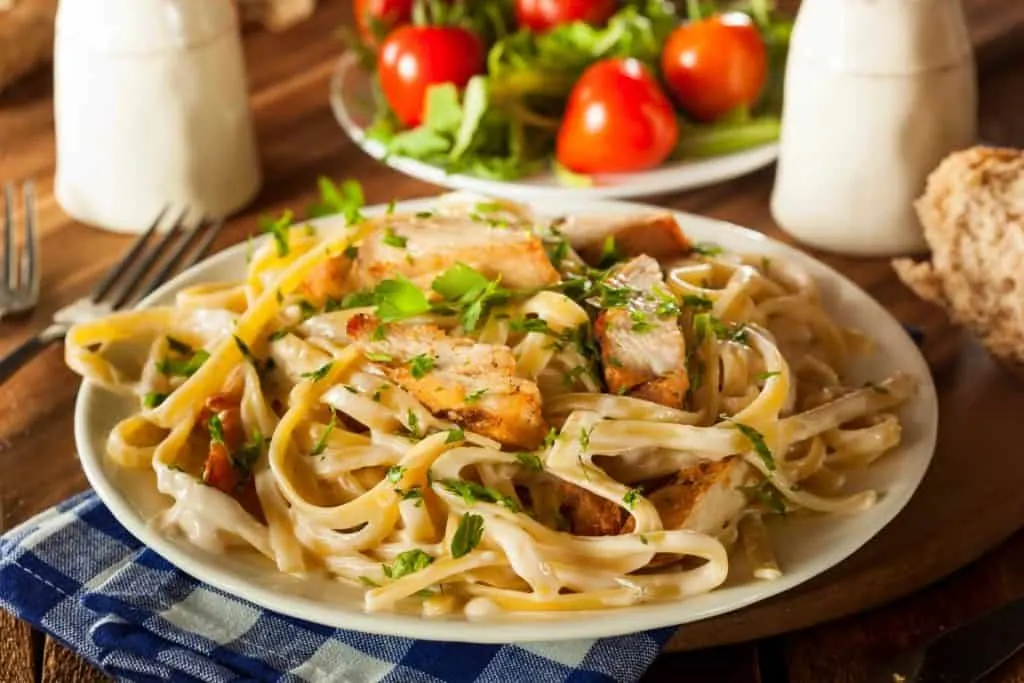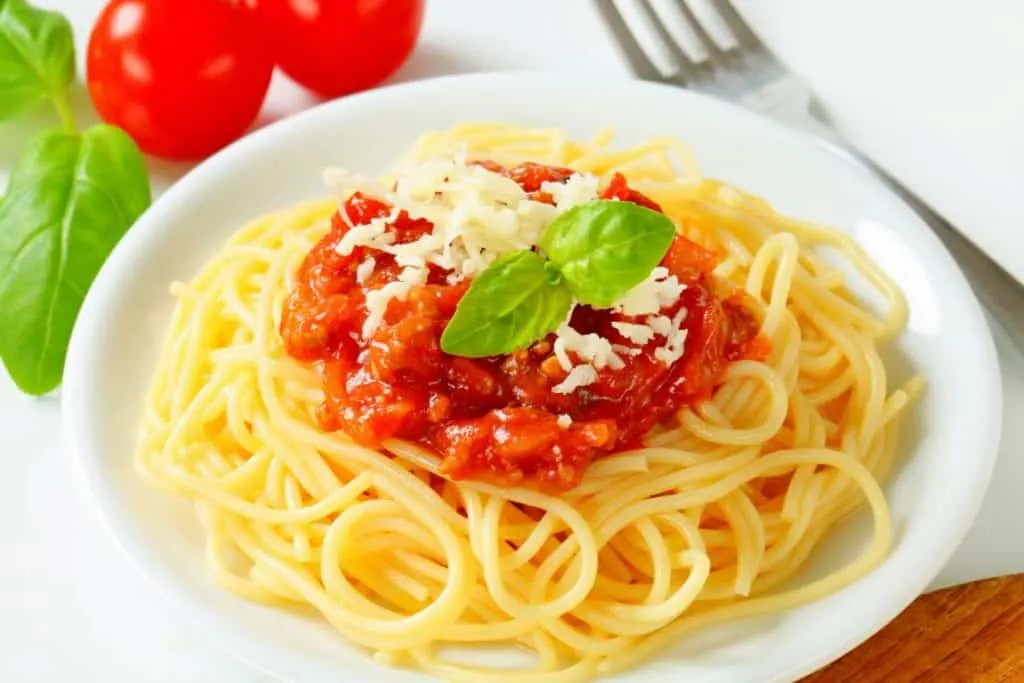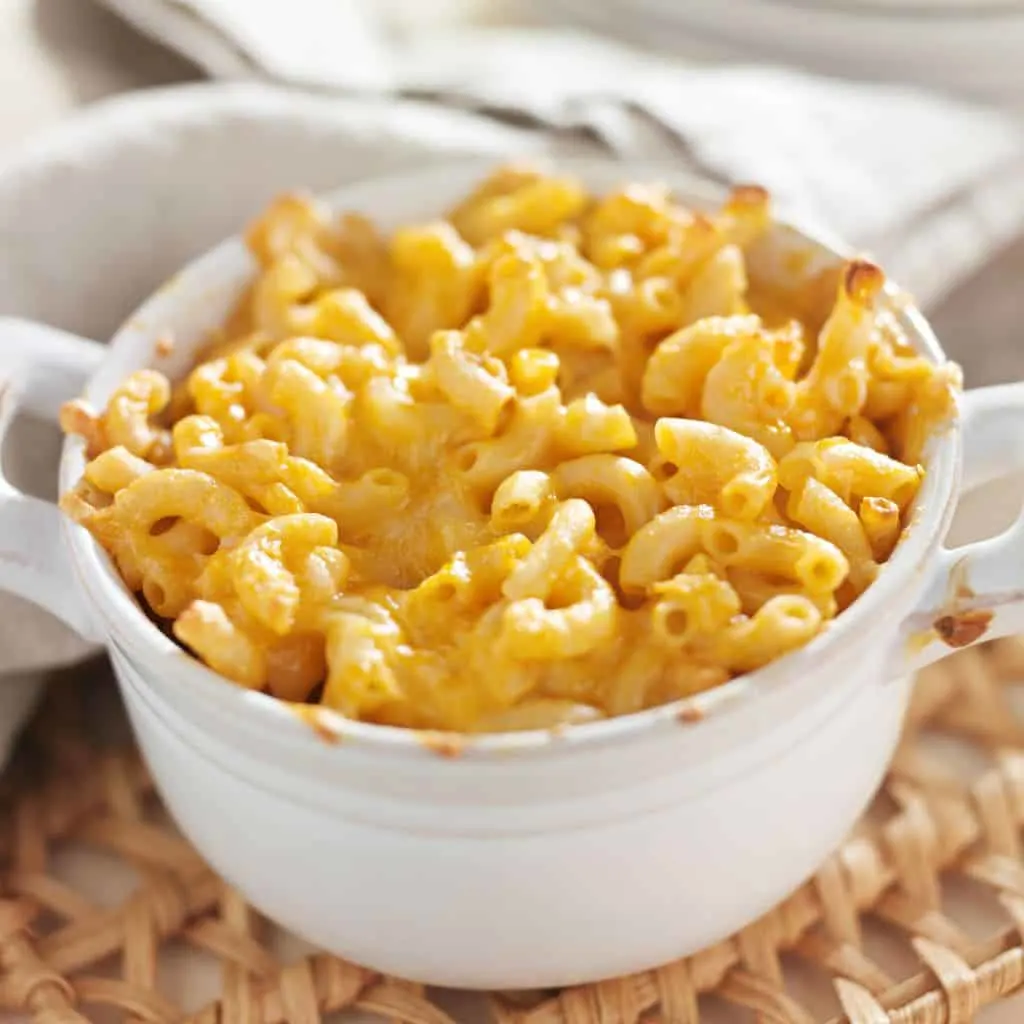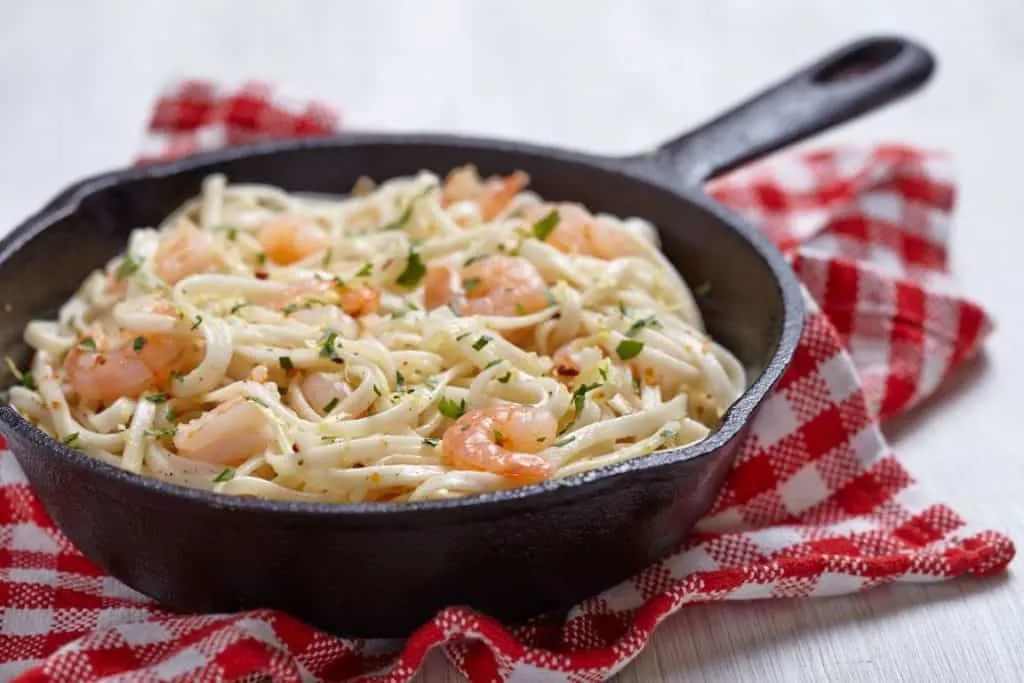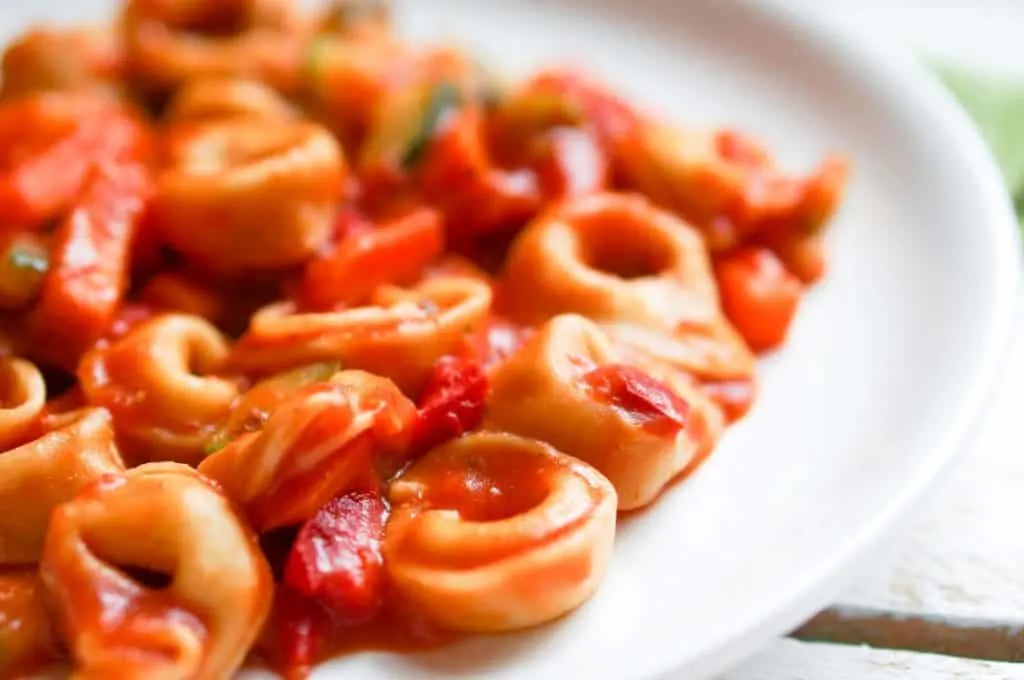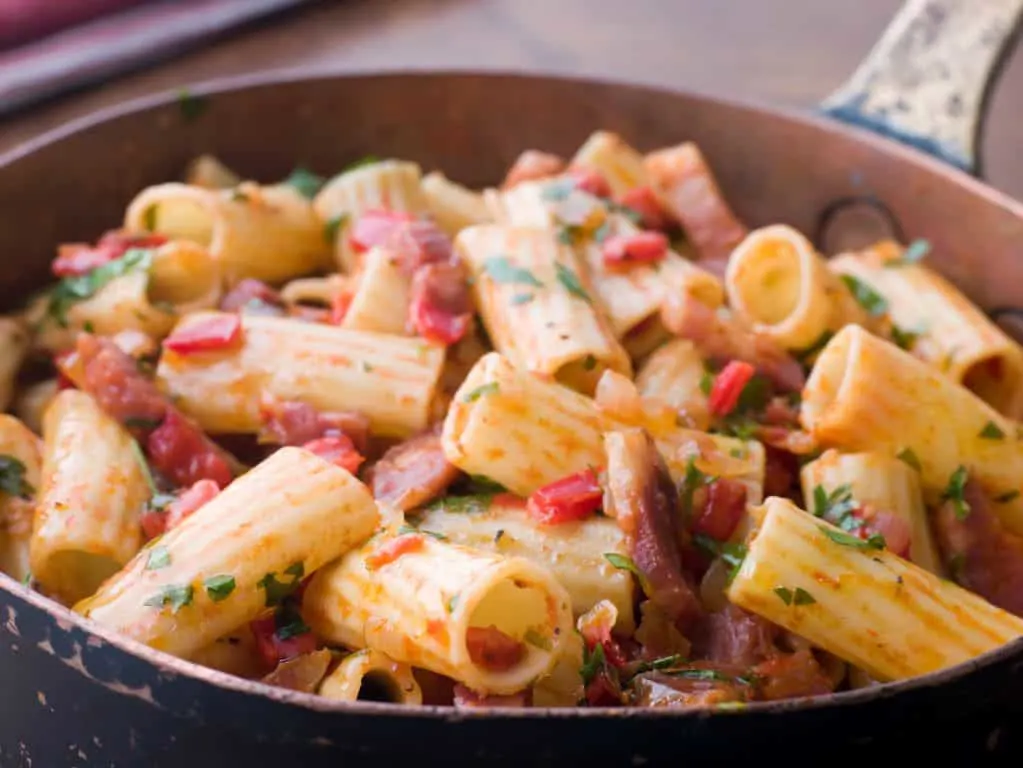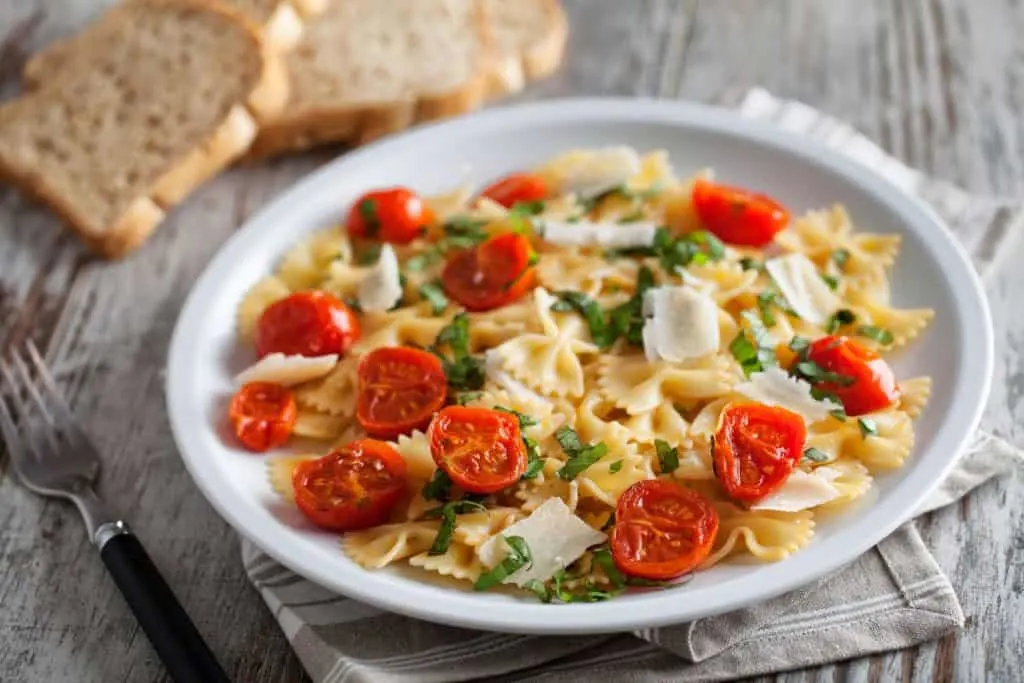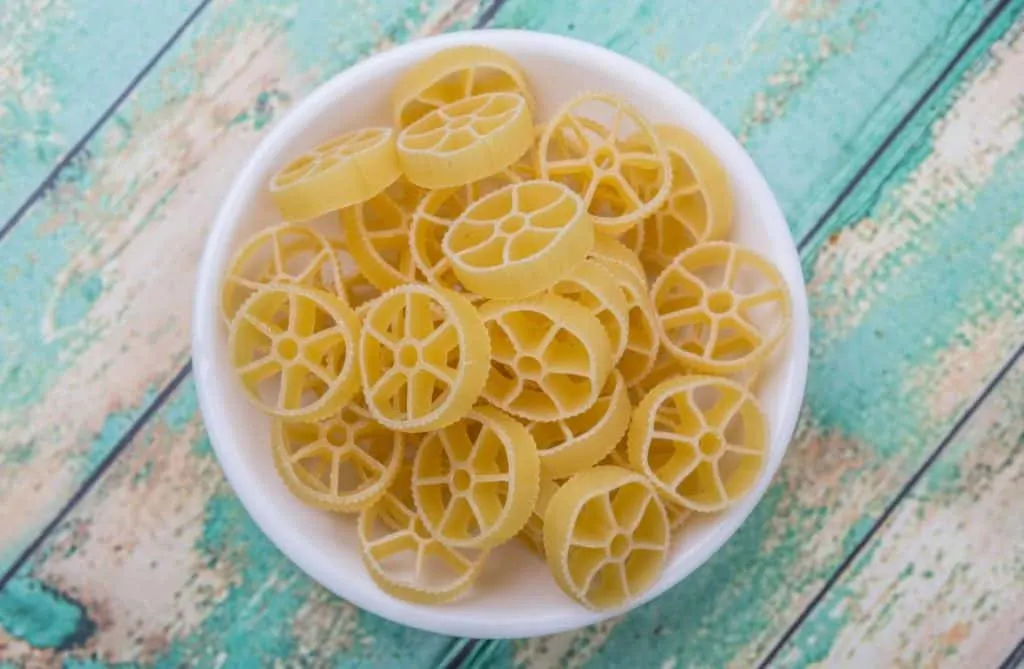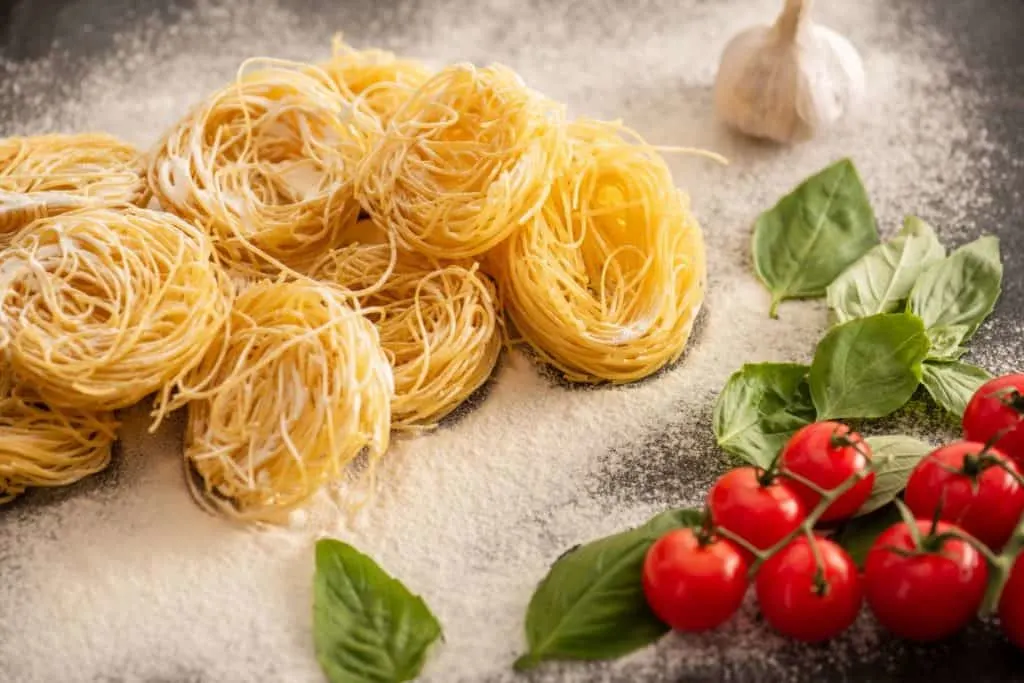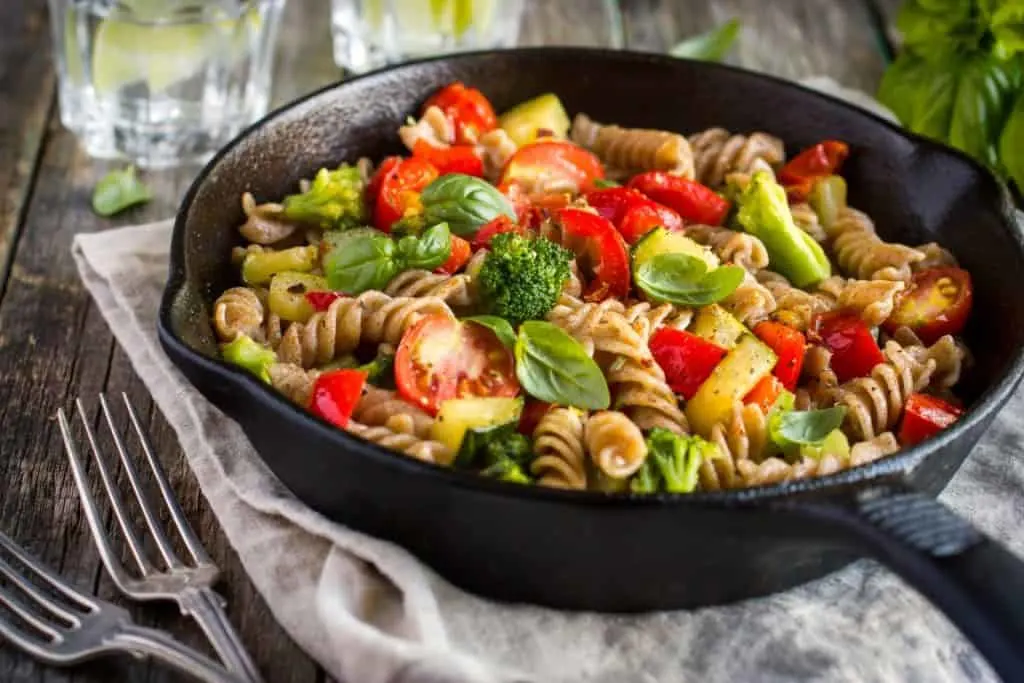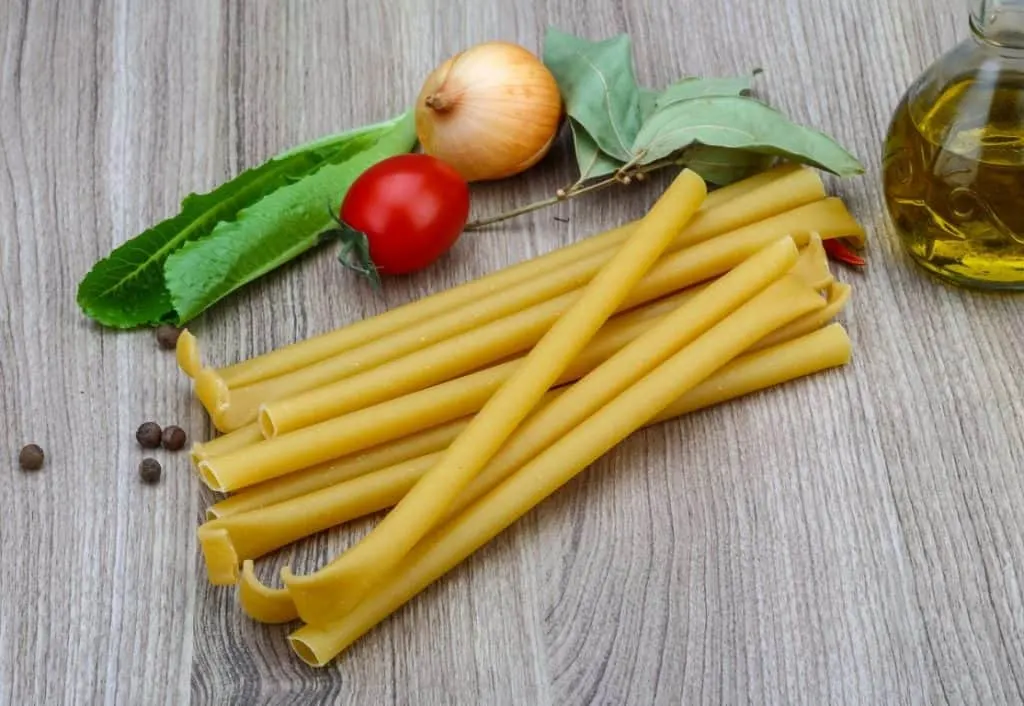Did you know there are at least 300 types of pasta out there?
They are known by over 1000 different names in different parts of the world.
In Italy, where pasta is the number 1 staple food, their names and shapes vary according to region and language.
Pasta dishes are some of the best-loved comfort food around the world. They’re easy to make, versatile, and quite filling.
Pasta comes in so many shapes and varieties, as do the pasta sauce options. You can never run out of ways to serve them.
Here’s a lowdown on the 21 most common types of pasta.
Ravioli
Ravioli are square or circular pillows of thin, egg-based pasta dough, sometimes with ruffled edges.
They are usually stuffed with meat, cheese, seafood, or pureed vegetables, then topped with oil- or butter-based sauces.
They are also served in soups or enjoyed plain, drizzled with olive oil.
Penne
These are two-inch long tubes of pasta that are either smooth or grooved and are cut diagonally at both ends.
They taste amazing with meat and veggie sauces where the chunks and bits can get trapped inside the holes. Chefs recommend penne for Bolognese, ragu and arrabiata sauces.
Lasagne
Best used in al forno (oven-baked) recipes, these square or rectangular sheets of flat pasta – some curly or wavy around the edges – are used in the dish that carries the same name.
Lasagne are usually smothered with tomato or béchamel sauce then interspersed with layers of beef, pork or chicken meat, then cheese. It’s the perfect comfort food!
Related – Slow Cooker Lasagne
Fettuccini
These are egg noodles cut into long, flat ribbons. They are often served with creamy sauces such as Alfredo and Carbonara.
Spaghetti
Probably the most popular in the world, spaghetti are long, cylindrical noodles traditionally enjoyed with meat and vegetable sauces. Popular dishes include Spaghetti Bolognese and Spaghetti and Meatballs.
They are thick enough to stand up to robust sauces, but also thin enough to be slathered in light, creamy Carbonara.
They’ll do well even with a simple dressing of olive oil and garlic.
In most Italian restaurants, spaghetti is paired with seafood or marinara sauces.
Related – Slow Cooker Bolognese – Instant Pot Bolognese
Macaroni
Like spaghetti, macaroni is an all-time favourite in many parts of the world, commonly enjoyed in salads and creamy casseroles.
The small, tubed shape, either straight or bent, go best with thick, creamy sauces that collect inside the curved hollow, providing pockets of flavour that bursts in every bite – macaroni cheese is a favourite in our house!
Linguine
Very much like spaghetti, linguine are long noodles with a thicker, flatter, and slightly elliptical shape.
The wider surface area allows sauces to cover more of the dough, making it suited for pesto and light proteins such as seafood.
Italian restaurants usually pair linguine with Alfredo or clam sauce. The word linguine is Italian for “little tongues”.
Tortellini
These hearty rings of dough are usually stuffed with a mixture of meat (prosciutto or pork) and cheese. They are enjoyed plain, drizzled with olive oil, or added into soups.
Rigatoni
These medium-sized ridged tubes are slightly bigger than penne, with flat ends. They are often cooked with bolognese, sausage or in a carbonara sauce.
Farfalle
Also known as “bow ties”, these dainty flat beauties are shaped like butterflies – farfalle being the Italian word for “butterfly”. Though delicate in appearance, they have enough surface area in their “wings” to hold rich sauces. Pair these with pesto or cheese sauce, or mix into cold salads.
Rotelle
Kids will love these cartwheel-shaped cuties, often called “wagon wheel” pasta. Thick, creamy sauces seep into the wheels’ crevices, allowing them to liven up mac and cheese, salads, or goulash.
Capellini
Commonly known as capelli d’angelo or “angel hair”, capellini are extremely fine, delicate noodles that are paired with light, refined sauces such as tomato or garlic and olive oil.
Small amounts of seasonal vegetables, chopped fresh herbs, and crumbled pancetta will add flavour and texture to capellini without overwhelming it.
Try this pasta also with thin soups or broths, or a light dairy sauce such as parsley crème.
Fusilli
Another hit with the kids. Fusilli are thick, corkscrew-shaped pasta commonly known as Rotini in the United States and other regions. Their spirals provide a rich texture that can be enjoyed plain as a pasta dish, baked into casseroles, or added into soups and salads. Bits of meat and veggies can get caught in the grooves, making this pasta an excellent base for chunky sauces. Fusilli is also ideal for pesto, Bolognese, and salads.
Related – Homemade Green Pesto
Bucatini
These thick, long tubes resemble spaghetti but have holes running through their centres. Pair these with stronger flavours such as tangy pancetta or crushed red pepper flakes. Bolognese or ragu also go well with this pasta.
Ziti
Derived from the Italian word meaning “fiancee”, ziti is traditionally served at Italian weddings. The medium-sized tubular pasta, smaller than penne, is usually combined with cheese, meat, sausage, onions, peppers, and mushrooms, and baked into a hearty, hefty casserole.
Orzo
Orzo are small, rice-shaped cuties. Also known as risoni, they are best used in soups, broths, stews, cold salads, and olive oil-based sauces. One of the more popular dishes orzo are found in is minestrone.
Gnocchi
These thick, soft, chewy pasta dumplings come in different sizes. They do best in rich sauces but they also work well with tomato, herb, and butter-based sauces. Gnocchi were traditionally made from potato starch.
Conchiglie
Also known as “shells”, these come in different sizes. Use the small ones in soups and stews and the medium-sized ones in meat sauces and casseroles. Big ones are best stuffed with cheese and baked.
Orochiette
These are small ear-shaped pasta usually served with juicy ingredients like broccoli and sausage, or thick sauces like meat sauce and ricotta cheese that can fill their hollow areas.
Cannelloni
Cannelloni are large tube-shaped pasta, 2- to 4-inch long. They’re the bigger version of the ziti. These are best stuffed with fillings of cheese, meat, vegetables or fish, and baked in an oven.
Pappardelle
Pappardelle pasta is wide and solid, perfect for serving with thicker sauces or in pasta bakes. Papardelle is wider than tagliatelle, usually about 1 inch wide making it ideal for a thick meaty sauce.
Extra Pasta Info
While most pasta are made out of wheat flour and water or eggs, some consist of rice flour, potato, corn, buckwheat, and other flours made from legumes like beans and lentils.
The coloured pasta shapes that you see are pre-mixed with vegetable purees made of spinach, tomatoes, mushrooms, herbs, spices, and seasonings.
Others come with fillings like cheese and meat which are meals in themselves, with just some sauce needed over the top.
Making your own pasta is a fun thing to do if you have the time and inclination – using a pasta maker makes the job easier, but you can do it without one.
With every size and form that pasta comes in, there is a reason and purpose behind it. Their shapes are chosen to match the consistency of the sauce they are paired with. Some shapes do well with light oil or tomato-based sauces. Others have ridges and tubes that capture bits of meat and veggies.
Still, other varieties are best suited for soups, salads, and casseroles.
The more you know about different pasta shapes and what they’re used for, the better you’ll be at choosing just the right kind you’ll need for the dish you want.
As a general rule, big, thick noodles can stand up to robust, meaty sauces, while thin, light ones go with light, delicate sauces.
Choose wide, flat ribbons for creamy sauces. Ridged, tubular, and creviced shapes are best for cheese sauces and chunky pesto.
Miniature sizes work best in soups and stews, and filled pasta is best enjoyed with simple butter or oil dressings.
What’s your favourite type of pasta? Let me know in the comments!
